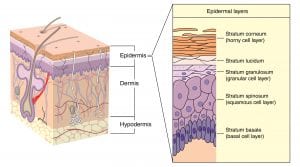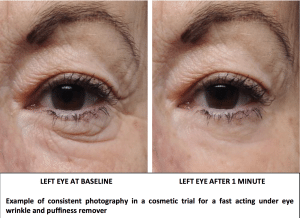Research service providers specialised in skin care products’ trials are commonly approached when cosmetic companies need to test their cosmetic products. Trials are in vivo studies, meaning they involve human volunteers that directly test the safety and efficacy of the product(s). Based on the results of the trial, companies might be able to make claims with regards to the product’s characteristics and benefits. However, many cosmetic companies engaging research service providers are still unclear about what they specifically get from sponsoring a trial. This article hopes to clarify the situation.
It is important to understand that there are many different types of trials, and what comes from them depends on the type of trial that is run. These can include, but are not limited to, consumer self-perception studies, studies involving objective instrumental measurements, and skin safety studies. However, for any properly run trial, a written report (not a ‘certificate’) is compiled on completion. This includes the details of how the study was conducted, the data and analysis, and the overall results of the study. A typical report should include at least the following components:
Study Objective
In this section, the purpose of the study is clearly defined. There could be one or more objectives in a particular study (so called primary and secondary end points). Typically, in cosmetic studies the primary end point would be assessing the efficacy of a product through collecting responses through questionnaires, instrumental measurements of the skin, and/or visual assessments. Generally, the safety of a product on human skin is also assessed as a secondary end point. It is important that the study objective be defined at the outset of the study rather than after the fact. It makes the obtained results more robust and less likely they were reported as significant without being rigorously tested.
Methodology
The specific steps used to get to the study objective is detailed in this section. The methodology is provided such that anyone wanting to replicate the study or understand how it was performed can do so within this section. This can include elements such as the duration of the study, number of visits, how the study products were used, the instructions participants followed, what tests were administered, what type of data was collected, and how it was analysed. This section is important in interpreting the results of the study and in what contexts they can be applied.
Study Population
The information in this section details the number of participants involved in the study and their particular demographic characteristics. Every study will have both inclusion and exclusion criteria, which define who can and cannot participate in a particular trial. Examples of inclusion criteria include the age of the participants, their gender, and certain skin characteristics they must have to be in the study. Exclusion criteria, which will prevent them from taking part in the study, include pregnancy, certain medical conditions, or even a list of medications they are not allowed to take because it could affect the results of study. By having well-defined populations, it means one can be surer that any results obtained are due to the effects of the treatment, rather than other population characteristics. However, an extremely limited population can mean less certainty when generalising the results to the wider population.
Results
Data collected during the study is analysed and presented in this section. Results can be related to the product efficacy (i.e. skin improvement) and/or safety (i.e. skin tolerability) of the study product. Generally, there will be tables and figures to summarise each type of data collected throughout the study (questionnaires, instrumental measurements, visual assessments). This will include means, standard deviations, percentage changes from baseline, and more. In addition, a detailed statistical analysis of the results are provided in order to determine whether the obtained data in one group was significantly better (i.e. most likely not due to chance) than another group. This will involve looking at the distribution of data within each group and comparing their means and variances to come up with a final judgement.
Conclusion
The obtained results are further discussed in the conclusion, where final remarks regarding the outcome of the study are made. Results are often summarised in a way that gives an overview or big picture of the study, in doing so addressing the objectives indicated at the beginning of the report. This is often the most important section of the report for sponsors, as it will inform future product formulation, testing, and how they will be able to market their product.
Appendices
Raw data tables (in contrast to the summarised data in the results section) and other references can be included in this section. This allows full transparency with regards to the results and how the report writing team has come to the study conclusions. Anyone wishing the replicate the analyses will be able to do so from the raw data presented here. It also allows inclusion of any extra information regarding the study, that did not have a place in the main body of the report such as original data capture forms, supplemental analyses, and other text which is not central to the main body of the report.
In summary
Many cosmetic companies can be surprised and sometimes even overwhelmed by the level of detail in the study reports. This can be easily overcome by understanding which sections of the report contain the information one wishes to know about. And of course, the report can be clarified through questions and inquiries with the research service provider. Sometimes, the two parties will organise a meeting to go through the results and conclusions of the report.
Nevertheless, reports bring into the spotlight the work involved in putting together a trial project in a coherent and standardised form. Knowing more about what the final product of a cosmetic trial is helps cosmetic companies understand the true essence and value of trials, with all its various elements and complexities.



